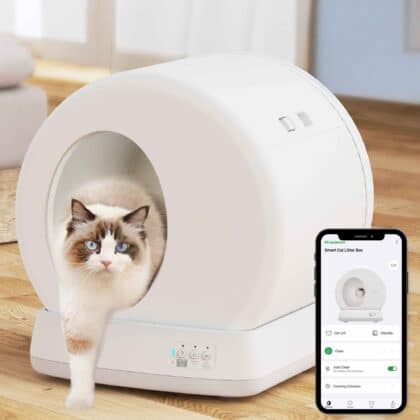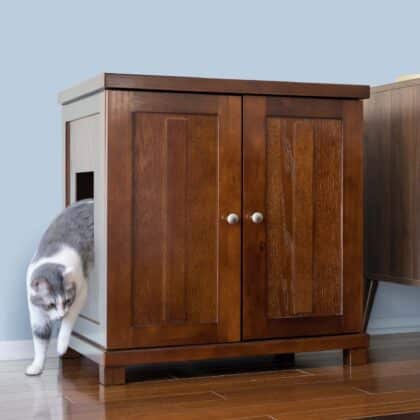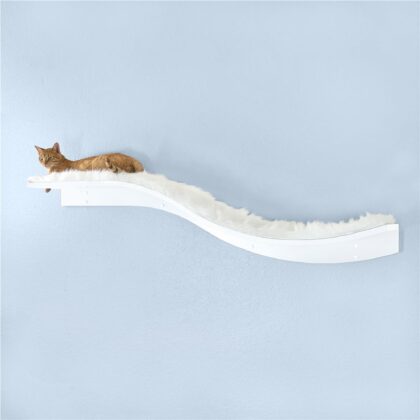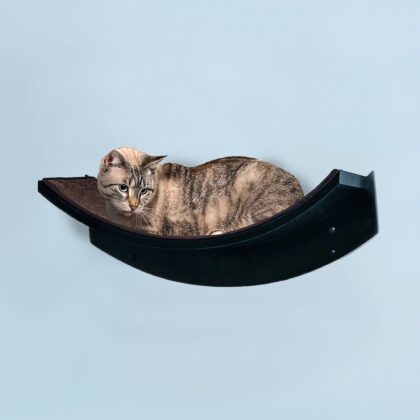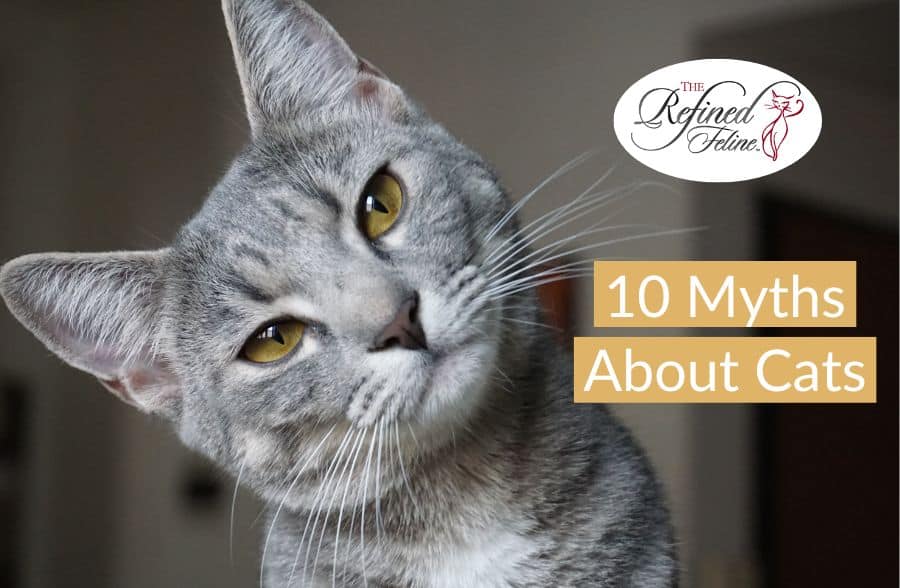
10 Myths About Cats
When it comes to cats, there’s a plethora of myths and superstitions surrounding their history and present existence. Most of these rumors have been debunked over the years, especially the older superstitions around bad luck. Since there are still some myths out there, The Refined Feline has the scoop on what’s true and what’s false when it comes to cats.
Myth #1: Pregnant Women Shouldn’t Live with Cats
One recent myth that has gained some traction is that pregnant women shouldn’t be living with cats. The myth revolves more specifically around the cat’s litter box. It states that if you’re pregnant and scooping the litter box you can contract a parasite called Toxoplasma Gondii from the cat’s feces. If contracted, this parasite can potentially lead to birth defects. It is dangerous if pregnant individuals ingest this parasite after scooping the litter box, but it can be easily avoided. It’s quite difficult to contract this parasite as long as you’re following basic sanitary conditions. Washing your hands after scooping or wearing gloves while scooping, significantly reduces any risk. Plus, the risk is already very low when it comes to indoor cats. You can also avoid this risk altogether by having another individual in the house scoop the litter boxes.
Myth #2: Declawing Isn’t Painful for Cats
For too long, many individuals have misunderstood what declawing a cat means. The actual surgery of declawing is not as simple or painless as it may sound. It’s much more involved than removing the nails from a cat’s paw, as their nails are retractable. When declawing a cat, vets actually have to remove part of their toes as well. This would be the equivalent of losing your entire first knuckle! If that wasn’t painful enough, the surgery will often leave bone fragments inside the paw afterward. These shards can cause pain for the rest of a cat’s life.
Cat’s paws may become extra sensitive, leading to behavior issues. One common issue is inappropriate urination, as the litter can become painful to their sensitive paws. There are many other alternatives to declawing that will leave you and your feline much happier and less stressed overall. There are adhesive tapes you can apply to furniture, keeping your cat’s nails trimmed close and natural pheromones. Providing enough appropriate scratching surfaces, like a scratching post, will also deter your cat’s from turning to your furniture too.
Myth #3: Cow’s Milk is Good for Cats
This may be more of a misconception than a myth but when many people think of kittens they think of milk. Like most other species, cats really only need milk from their own species. If they do drink cow’s milk, it can cause vomiting and diarrhea. If cat milk, or milk replacement, can not be found, goat’s milk is often used as a substitute.
Myth #4: Purring Means A Cat Is Happy
This is a slightly more recent discovery, as it’s been natural for many years to believe a purring cat is always happy. However, any cat owner who’s discovered their purring cat in a less-than-ideal situation may be confused. Recent research has found that a cat’s purr is highly therapeutic, potentially even on a wavelength designed for healing. So, it makes sense that cats will purr when they’re happy, but also when they’re stressed. They may actually be using their purr as a means of self-soothing.
You should be able to tell whether your cat is purring from happiness or from stress. The easiest way is to focus on the kitty’s body language. If they’re content and seeking attention while purring, your cat is most likely feeling fine. If they’re hiding and reluctant to move or interact while purring, this is a sign that something could be amiss. Purring when in distress is less common, though, and most of the time your purring feline is purrrfectly content!
Myth #5: Cats Always Land on Their Feet
You’ve most likely witnessed your cat landing not so gracefully. While most cats do land on their feet most of the time, this action depends on multiple factors. A cat’s reflexes are sharp and their spine is highly flexible, giving them ample turning capabilities while landing. However, age, health conditions, arthritis, and other factors can slow a cat’s response time. Cats can end up injuring themselves from a fall, so be sure to keep an eye on what your kitty climbs.
Myth #6: You Should Wait to Spay Your Cat
You may have heard that it’s best to let your female cat have a litter of kittens before having her spayed -or you may want to experience the joy of feline childbirth. However, the reality of the situation is that it’s often not joyful for the cat and there just aren’t enough homes for all of the cats that already exist. Cats can get pregnant as young as just four months old. Young mothers can get pregnant again even while their current litter is still nursing! Most vets will happily spay or neuter a cat once they reach just a few lbs.
Myth #7: A Human Year is 7 Years for a Cat
The equivalent of human years to cat years has changed a lot over the years. It was originally thought that seven years was equal to one human year. However, a cat’s first year of life is now thought to be equal to about 16 years since a kitten grows through all of the early childhood years by the time they reach one year. Then, their second year adds about 9-10 years to their age. Finally, every year after that is only equivalent to about 4-5 years. This is good news and many cats now live well into their 20’s!
Myth #8: Cats Can Live On A Vegan Diet
This is a dangerous myth that started in the last few decades as people have wanted to become healthier with their food choices. However, being vegan is simply not possible for cats. Cats are obligate carnivores which means that they have to eat meat to get the proper nutrients they need like taurine and other nutrients. People are omnivores, meaning they can eat a multitude of foods and still get the nutrients they need. Cats need meat in their diet, otherwise, they can develop serious health issues without it. So, make sure your furry friend gets their purr-otein!
Myth #9: Cats Don’t Need Exercise
Although some cats are naturally more active than others, that doesn’t mean that cats don’t require daily exercise to be at optimal health. The overall amount of playtime needed will very by the cat. Ideally, cats should get around an hour of exercise, especially if they are younger or more playful. This playtime should be split up throughout the day to give them a chance to rest. Cats have a lot of energy but usually expel it in short bursts, so playing for 15 minutes at a time is best. Older or larger felines may need some coaxing to play. Their playtime should also be broken up into smaller intervals. Mental stimulation is equally important for cats too. So, cat food puzzles have become more popular for meal times to keep cats stimulated.
Related: Benefits Of Leash Training Your Cat
Myth #10: Cats Hunt In The Middle Of The Night
It may seem like your cat is constantly getting the zoomies around 3 AM but most of their natural hunting wouldn’t occur in the middle of the night. Cats typically hunt around dusk and dawn, also known as crepuscular, when their eyesight is at its best. Cats can certainly become playful at any time though, so be ready to help them get their wiggles out when they start running around! Getting that extra energy out during the day can also help keep your feline quieter during the nighttime.
10 Myths About Cats Debunked
Cat people may have already known about many of these myths but some of them are not well known. How many of these myths did you already know were debunked?


